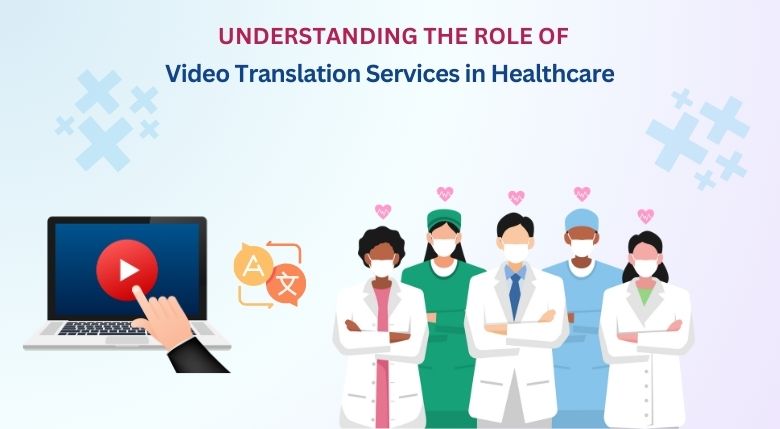
Today, healthcare has become global industry which is connecting people across the world. Simultaneously, Video Translation Services in Healthcare also have become an important tool in ensuring accurate communication between healthcare providers and patients. Translated video content has become an important in delivering important medical information and related services.
The Increasing Demand for Video Translations in Healthcare
A report by Migration Policy Institute concludes that approximately 300 million people live outside the country of their birth. Additionally, the US Census Bureau found that around 9% of its population speak English ‘less than very well’. With global migration on the rise, patients face major challenges when they want access to medical services. They struggle to communicate their symptoms, understand diagnoses, or even follow medical instructions. Thus, language obstacles not only endanger the patient’s safety but also limit access to preventive care. This results in higher hospital readmission rates and longer hospital stays, thereby directly increasing the medical bills. With accurately translated medical video content, a patient based in Bihar can benefit from the healthcare professionals situated in Delhi and likewise associated services. Types of healthcare videos that require translation solutions
• Telemedicine Consultation Videos
Telemedicine has gained popularity, especially after the COVID-19 pandemic. Although non-native speakers often face challenges in understanding real-time consultations. Video translation solutions can overcome this communication gap by allowing real-time and recorded translations of tele medicine consultations. The live interpretation services enable the patients to interact in their native language during the tele health session and ensure that no important information is lost in translation. Data published by the Tele health Resources Centre shows that 25% of Telehealth users are non-English speakers. This highlights the importance of language conversion services in the field of medicine.
It might pique your interest to explore the benefits of teleconference interpreting services. If you want to explore more, you can read this informational web blog on Discover the Benefits of Teleconference Interpreting Services.
LOOKING FOR ACCURATE VIDEO TRANSLATIONS IN HEALTHCARE SECTOR?
Somya Translators’ video translations are just the right thing for you. Reach out to us!
• Patient Education Content
A study released in the Journal of Medical Internet Research reveals that patients who watch health education videos in their native language are 40% more likely to follow the prescribed treatments than those who solely rely on the written material in an unfamiliar language. This shows that well-translated patient education videos can strongly impact on the medical outcomes of patients. Patient education material is widely used to explain medical conditions, treatment options, and postoperative care instructions to patients. These videos are created to simplify complex medical terminology into easily understandable visual and verbal information. For instance, video files that explain managing chronic conditions like cancer, Alzheimer are often converted into multiple languages to ensure that the non-English speaking patients can also understand such information.
Therefore, without accurate translation, patients might struggle to understand the critical aspects of health management leading to complications.
It might also interest you to learn the importance of localization services in the healthcare sector. If you want to learn more, you can read this engaging web blog on Enhancing Healthcare with Localization Services for the Pharmaceutical Industry.
• Training material for professionals
Professionals in the medical sector are required to stay updated with the latest medical procedures, technologies, and jargon. Translation solutions ensure that the instructional material can be made accessible in multiple languages, which allows healthcare professionals from diverse linguistic backgrounds to acquire the required knowledge and training. This is especially important on the international level, where medical professionals from different countries come together during global health emergencies or humanitarian missions.
For instance, The World Health Organization provided translated videos on managing infectious diseases such as COVID-19 and influenza. This material was made available in multiple languages using Forward and Back Translation, ensuring that global healthcare information was circulated accurately in all languages.”
• Informed Consent Video
Before undertaking the medical procedures, the patients are to provide their informed consent. This process includes explaining the procedure, potential risks, and benefits. The informed consent videos are also used for patients’ better understandings for their treatment procedure.
• Public Health Awareness
During health crisis situations like pandemics or outbreaks, governments and healthcare institutions seek public health awareness videos to spread important information. Such material reaches diverse populations faster. For example, in 2020, the Centre for Disease Control and Prevention (CDC) translated their COVID-19 prevention and vaccination videos into more than 35 languages to guarantee that all communities with limited English proficiency also had access to the lifesaving information.
Conclusion
The importance of video translation solutions in health care are undeniable. As the global population is highly diverse, the health care professionals must ensure that the video content––from patient education to informed consent––is available in multiple languages. Such services not only improve the patient’s health but also ensure legal compliance and provide a cost-efficient solution for communication in health and medical sector. Investing in Language Service Providers like Somya Translators, who offer efficient video translation and Clinical Trial Translations at the most affordable rates, could be a game changer.

